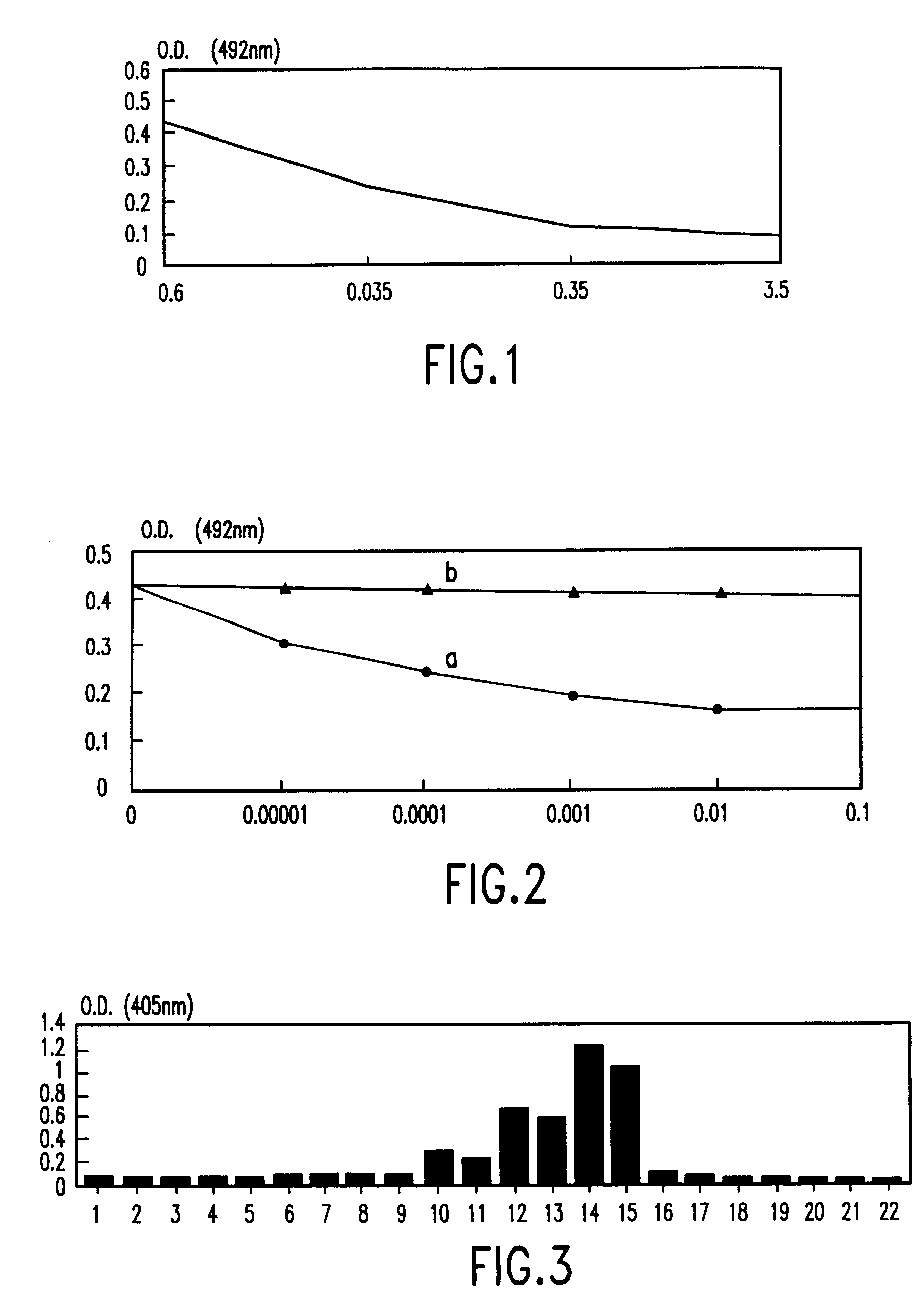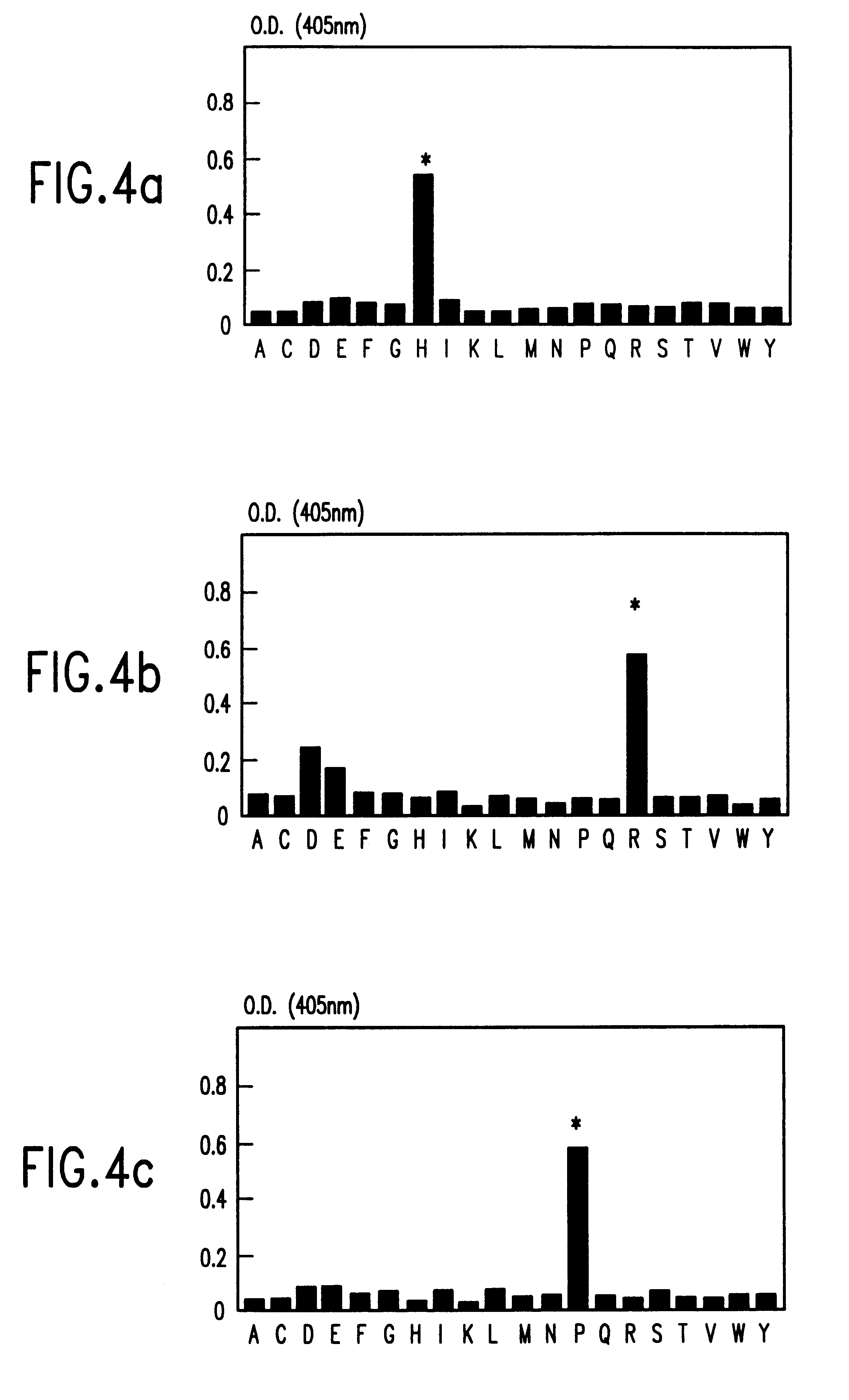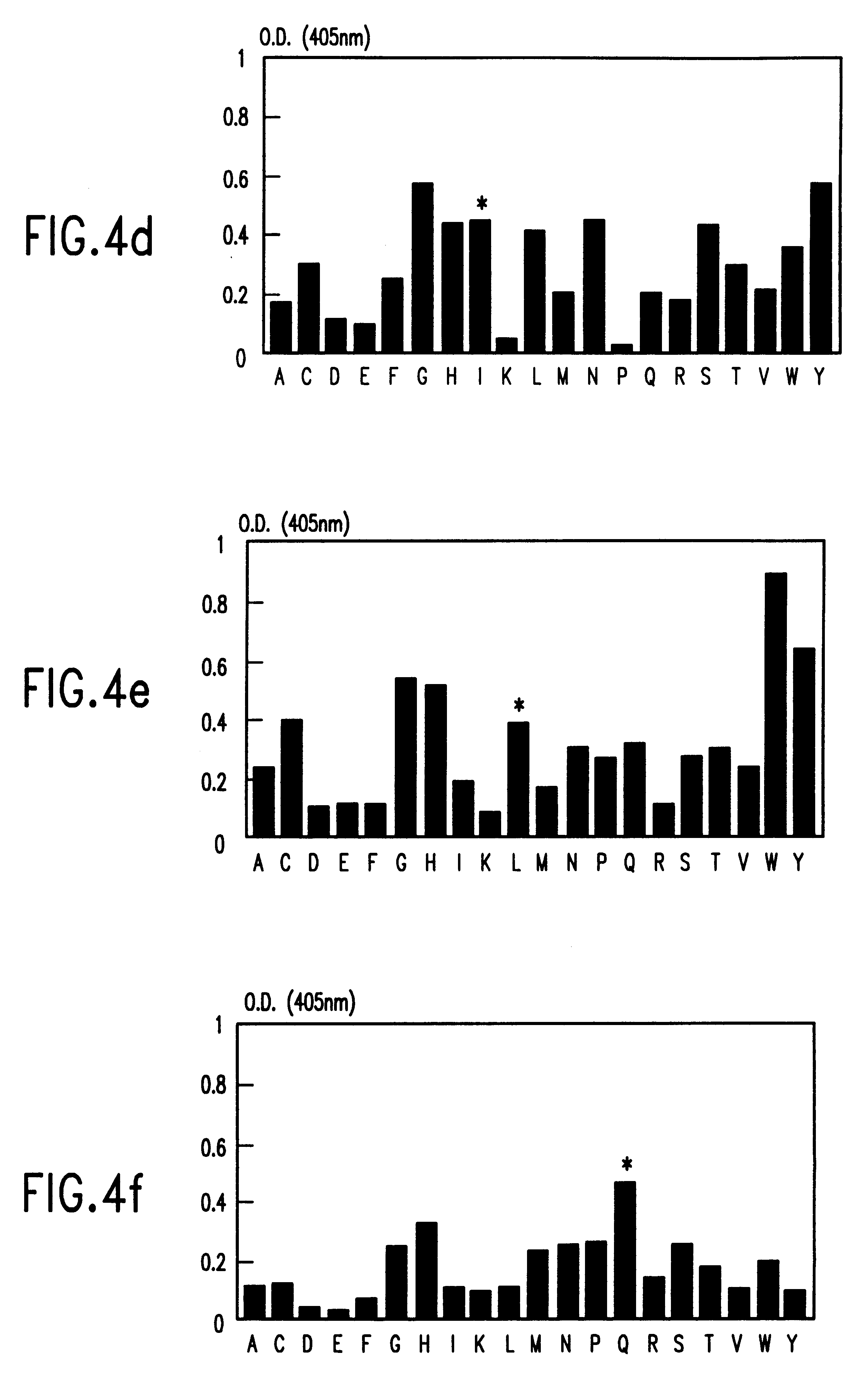Mimotopic polypeptides of toxoplasma gondii and applications
a technology of toxoplasma gondii and mimotopic polypeptides, which is applied in the field of mimotopic polypeptides of toxoplasma gondii and applications, can solve the problems of difficult extraction, large number of animals, and difficulty in accessing experienced staff and animals
- Summary
- Abstract
- Description
- Claims
- Application Information
AI Technical Summary
Problems solved by technology
Method used
Image
Examples
example 2
Determination of the Sequence of the Phage Clones Selected and Immunological Analysis of said Clones by the ELISA Technique
The DNA of phages corresponding to the 30 clones chosen was prepared according to the method described by Sambrook et al., 1989. Molecular Cloning: A Laboratory Manual, 2nd Edition, Cold Spring Harbor Laboratory, Cold Spring Harbor.
The sequencing of these clones was carried out according to the manufacturer's procedure (United States Biochemicals) with the Sequenase enzyme (trade name) using a primer of 18 bases (5-TGAATTTTCTGTATGAGG-3) (SEQ ID No.77). This primer is complementary to nucleotides 1663-1680 of the gene encoding the native PIII protein of the phage.
The nucleic sequences obtained, when they are converted into amino acid sequences, indicate that the peptide sequence Trp-His-Trp-Arg-His-Arg-Ile-Pro-Leu-Gln-Leu-Ala-Ala-Gly-Arg (SEQ ID No.48) is found a large number of times in the clones selected. Indeed, as shown in the following table, of the 30 clon...
example 3
Inhibition, by the Native P30 Protein, of the ELISA Response Obtained with the Phage Clone Identified
A competition ELISA test was carried out in order to determine if the response obtained with the phage clone identified is inhibited by pre-incubation of the anti-P30 monoclonal antibody 1E1E7 with the P30 protein.
The ELISA test is carried out as described in Example 2 with the following modifications: the monoclonal antibody 1E1E7 (at the concentration of 6 nM) is preincubated with various concentrations of P30 protein for 20 minutes at 37.degree. C. and then the mixture is added to the wells of the ELISA plate in which the phages corresponding to the pentadecapeptide Trp-His-Trp-Arg-His-Arg-Ile-Pro-Leu-Gln-Leu-Ala-Ala-Gly-Arg (SEQ ID No.48) are attached.
The results obtained show that the ELISA response is inhibited by 45% for a P30 protein concentration of 35 ng / ml. This inhibition is up to 80% with a P30 protein concentration of 3.5 .mu.g / ml.
The results obtained (FIG. 1) are stand...
example 4
Specificity of the Anti-Toxoplasma gondii Human Antibodies for the Sequence Trp-His-Trp-Arg-His-Arg-Ile-Pro-Leu-Gln-Leu-Ala-Ala-Gly-Arg (SEQ ID No.48) Carried by the Phase Clone Identified
The monoclonal antibody 1E1E7 recognizes an immunodominant site on the P30 protein. Efforts have been made to know if the pentadecapeptide Trp-His-Trp-Arg-His-Arg-Ile-Pro-Leu-Gln-Leu-Ala-Ala-Gly-Arg (SEQ ID No.48) is also recognized by the human antibodies present in the sera of a patient infected with Toxoplasma gondii.
The ELISA test was carried out as described in Example 2 with the following modifications: 100 .mu.l of various dilutions of human serum of a patient infected with Toxoplasma gondii (positive serum--reference G8) are brought into contact with the. phage clone identified, immobilized as described in Example 2, for 30 minutes at 37.degree. C. After two washes with TBS / Tween 0.05%, 100 .mu.l of monoclonal antibody 1E1E7 at the concentration of 6 nM are added and incubated overnight at ...
PUM
| Property | Measurement | Unit |
|---|---|---|
| Fraction | aaaaa | aaaaa |
| Length | aaaaa | aaaaa |
Abstract
Description
Claims
Application Information
 Login to View More
Login to View More - R&D
- Intellectual Property
- Life Sciences
- Materials
- Tech Scout
- Unparalleled Data Quality
- Higher Quality Content
- 60% Fewer Hallucinations
Browse by: Latest US Patents, China's latest patents, Technical Efficacy Thesaurus, Application Domain, Technology Topic, Popular Technical Reports.
© 2025 PatSnap. All rights reserved.Legal|Privacy policy|Modern Slavery Act Transparency Statement|Sitemap|About US| Contact US: help@patsnap.com



